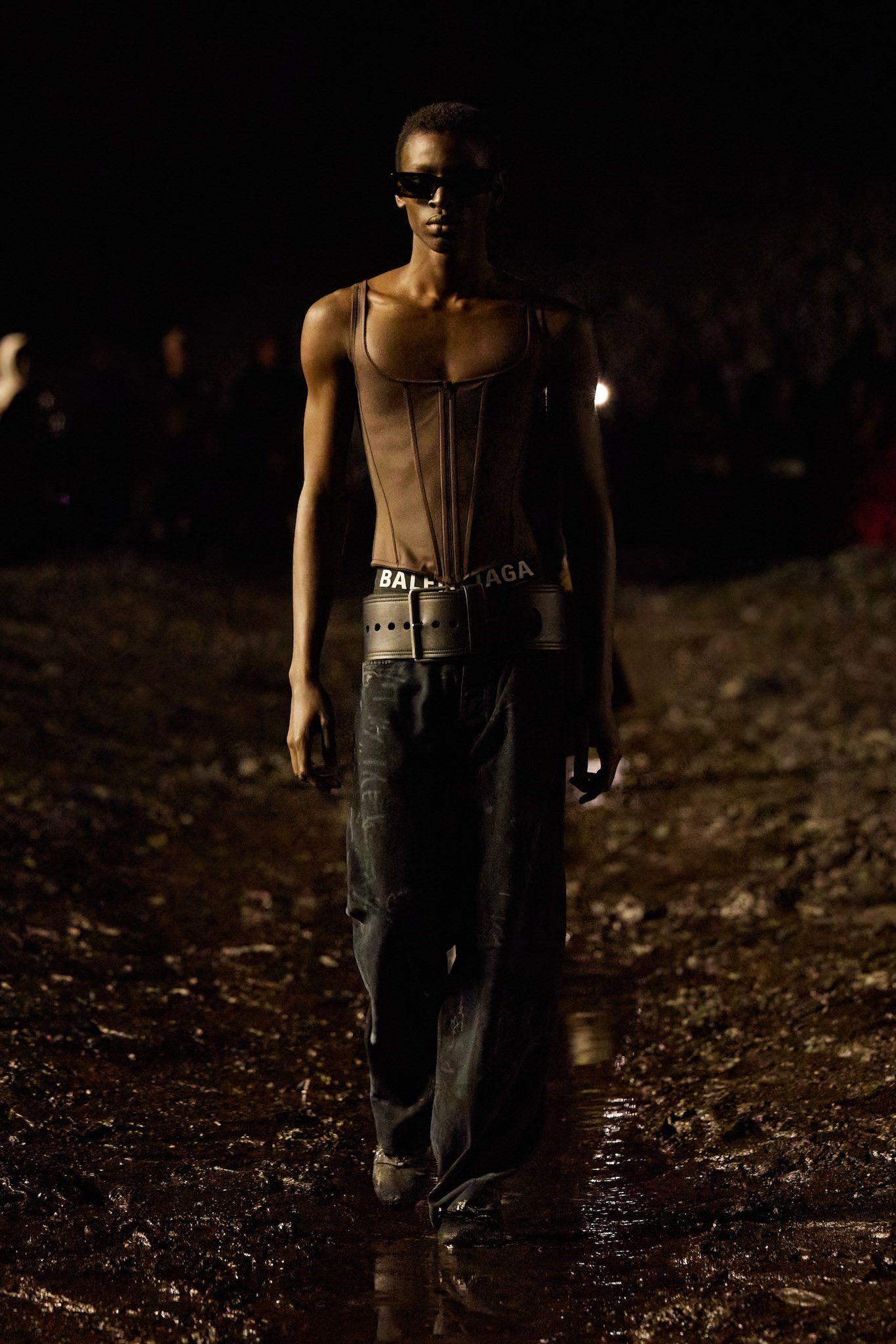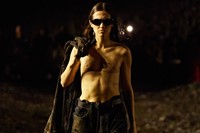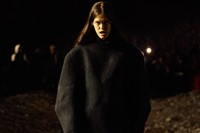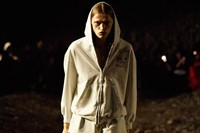There’s a Gallic phrase, nostalgie de la boue – which literally translates as ‘nostalgia for mud’ – describing an attraction to and fascination with low culture, experience, and degradation. I wonder if Demna thought about that when pulling together his Balenciaga show, which took place around a giant tranche of mud, artificially fragranced by the scent artist Sissel Tolaas to reek of earth. That smell clung to you, to your clothes, for days after. There was no escaping this Balenciaga show.
Which is a fitting metaphor for the influence of Demna. Nostalgie de la boue links with his own tastes and philosophies, combining elements drawn from the streets with notions of couture, which have had a profound impact on fashion over the past decade – his shapes, his decorative motifs, his obsessions, are all part of the common fashion language now.
The idea, on paper, doesn’t sound so new, but when fashion fishes out of the gutter it's usually a rarefied bunch of references it evokes, sanitised and often historicised - the punks of the 1970s, grunge of the 1990s, an acceptable bunch of fashionable ‘streets’ that we’re all familiar with, and therefore don’t find so shocking. Demna’s streets are brutal, harsh, and utterly contemporaneous – there’s a sharpness, a nastiness to the low culture he combines with Balenciaga’s snobbish repute. And in his show notes, he stated that the show’s set was “a metaphor for digging for truth and being down to earth.” There’s a sense of this both to Demna, and his work. Last season, the truth he chose to show was brutal and hard to swallow – many questioned if it should even be shown in a fashion context, which is the sign of great fashion, I suspect. And its impact continues to resonate.

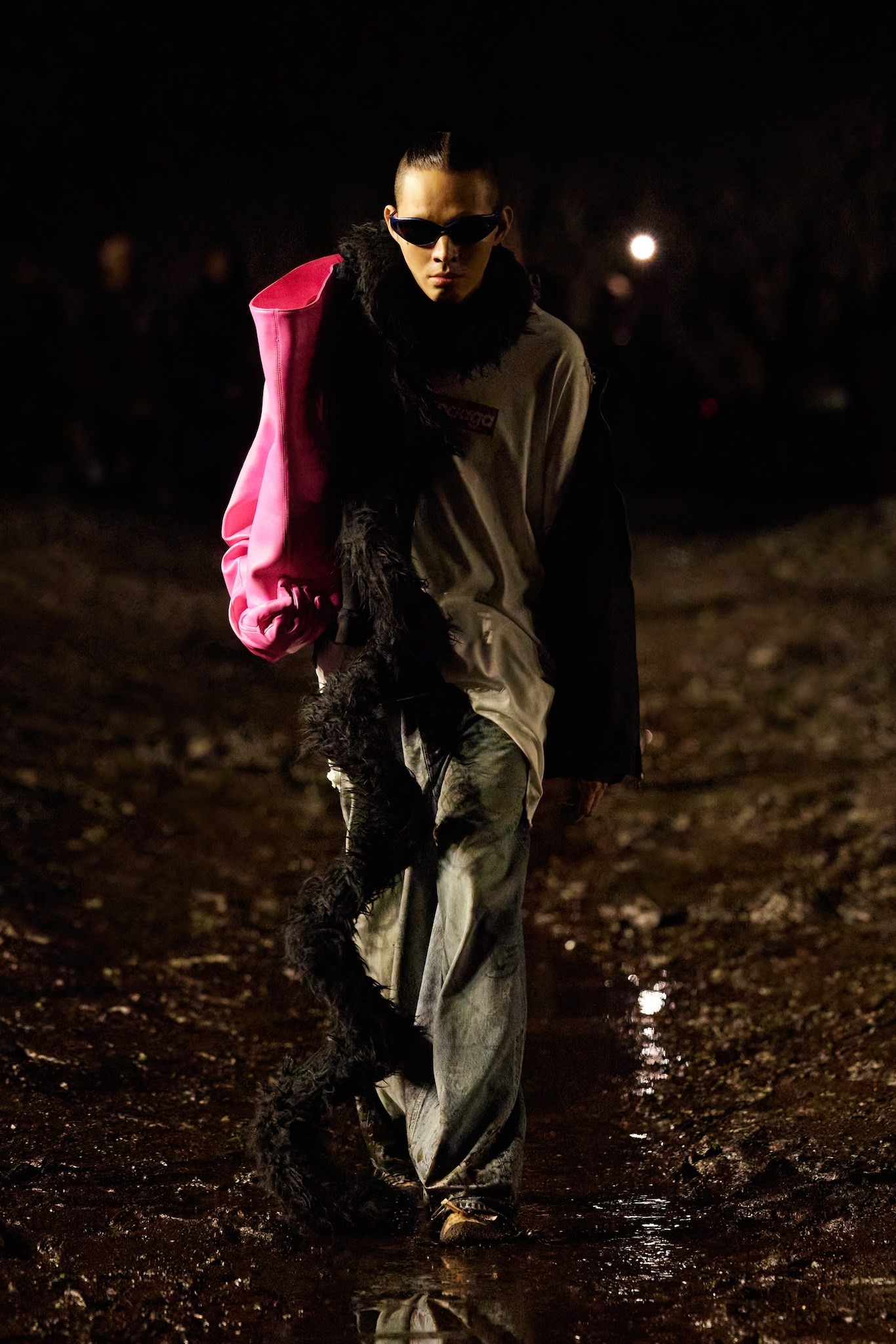
This time, Demna’s commentary was about individualism. That’s why his show didn’t contain identikit recreations of subcultural figures, but was seemingly peopled with reality. And real people really wear ripped jeans, although various media outlets respond hysterically when that is extended and exaggerated, as Balenciaga did earlier this year with its intentionally hyper-destroyed sneakers. Torn, stained and worn by hand, they took hours of work – the same kind of time-intensive labour that would normally go into, say, sequinning an evening dress or tailoring a tuxedo. “Putting luxury fashion into the box of polished, exclusive, and visually expensive is limited and pretty old school,” Demna wrote. What he seemed to be asking, through this show, is: why is one more worthy, more desirable, than the other? Can’t they both exist? Isn’t there a validity to both?
Of course, asking those questions within the framework of a couture house is sometimes perceived as heretical. So is the idea of an expensive beaded gown trailing in the muck, which Demna also proposed – a form of destruction allied with his shredded sneakers, and beaten-up jeans, and fucked-up jackets. They represent the wear of the world, sure, but also what the world wears. And how about the fetish of the designer handbag – fashion’s age-old cash cow – here extended into an entire dress? On the one hand, it was a demonstration of Balenciaga’s excellence in leather goods, but with an S&M whiplash feel to the dancing leather gewgaws and handles, it also seemed a reflection of the fetishisation of luxury today.
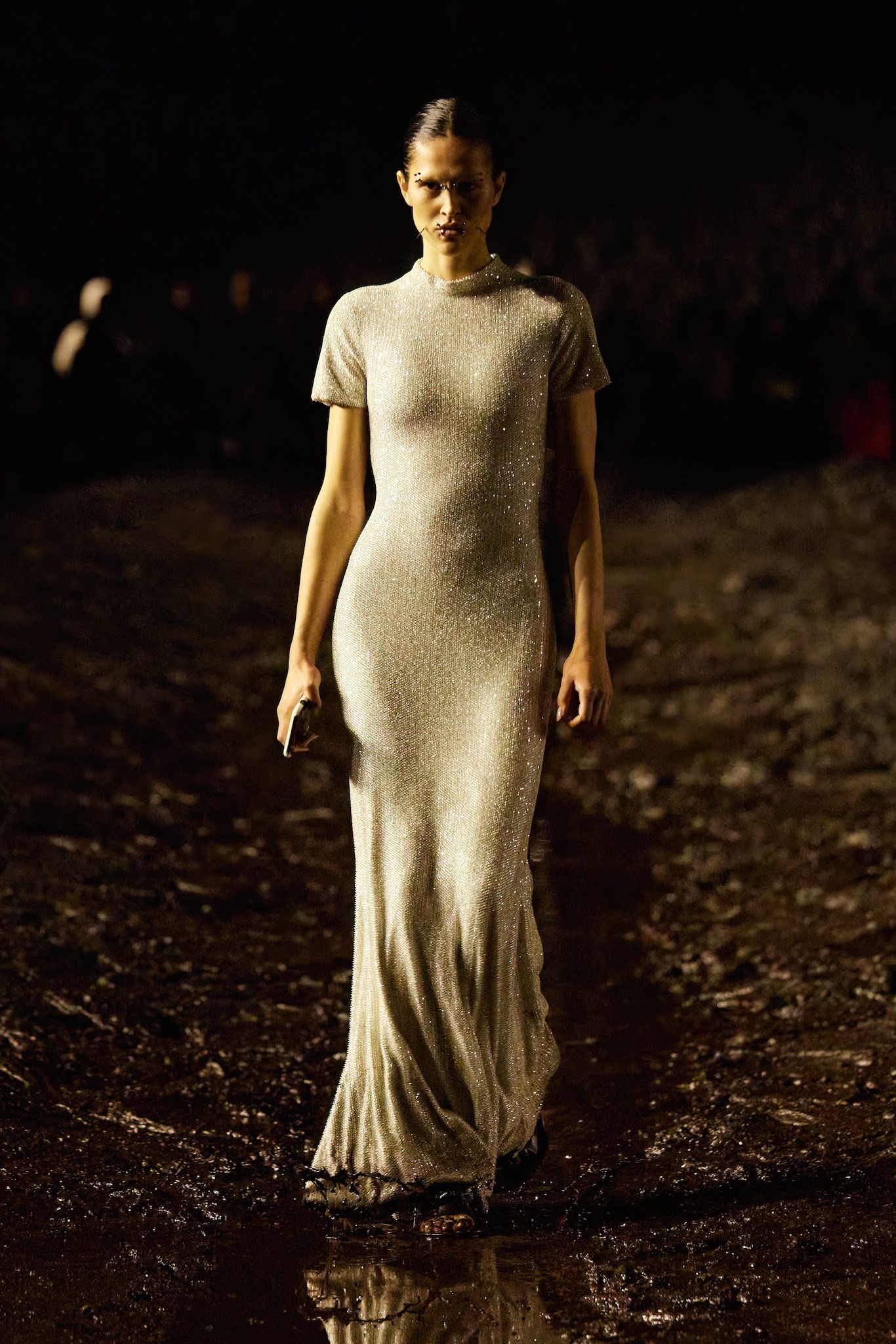
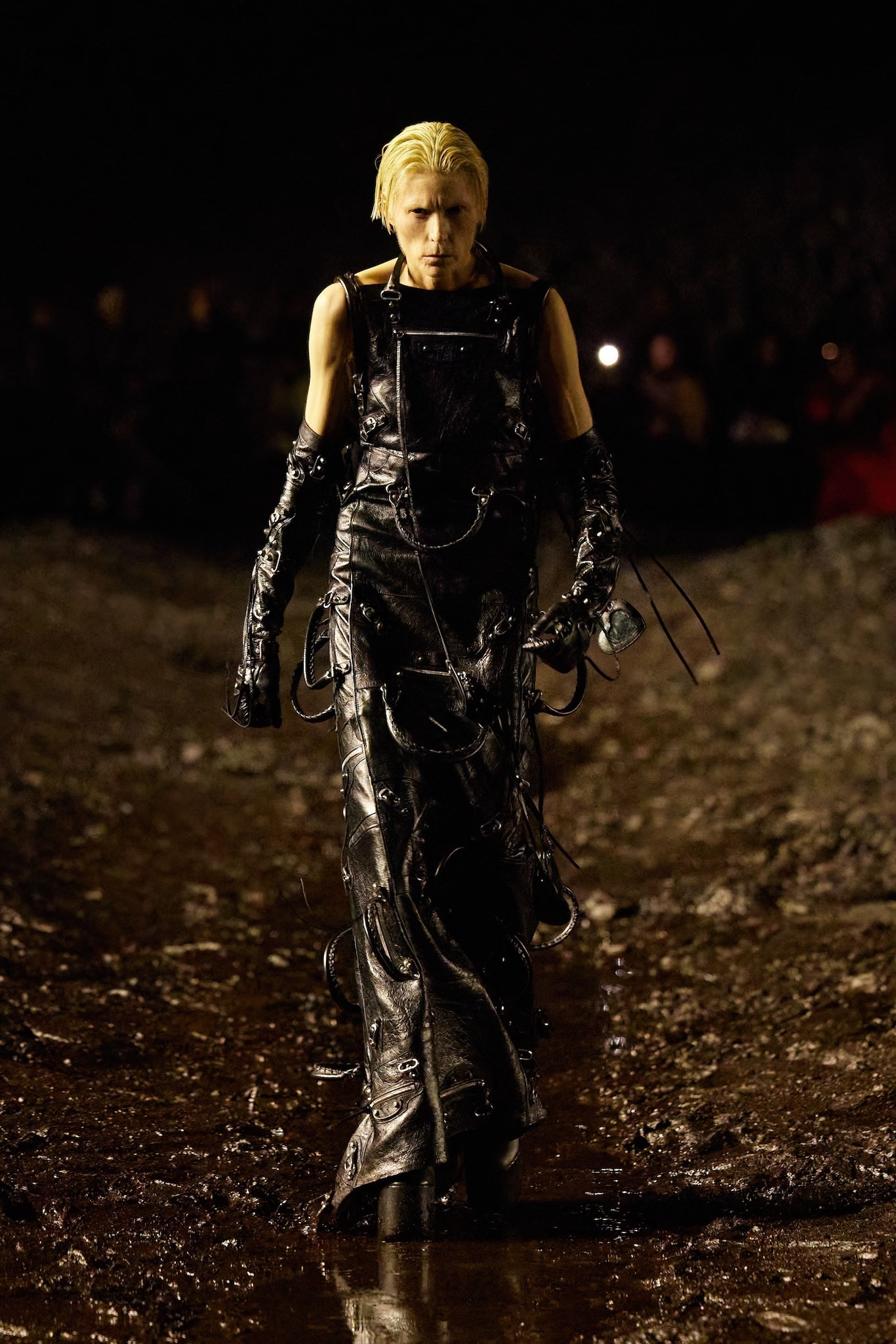
Nostalgie de la boue is a pithy phrase for a show that took place in the mud. But, really, it doesn’t summarise what Demna is trying to do. He doesn’t perceive a hierarchy, a strata of influence – he isn’t consciously seeking out what some may call ‘low’ – rather he’s interested in individuality. You see it across both ready-to-wear and couture – in both, he shows jeans and gowns, pieces destroyed and pristine, ideas evocative of fashion’s history or the hyper-modern. There is no right or wrong – and, certainly, it isn’t about prescriptive ways of dressing, about ‘trends’ or even, perhaps, about fashion. “How great it is to be different from one another,” Demna said. Amen to that.
